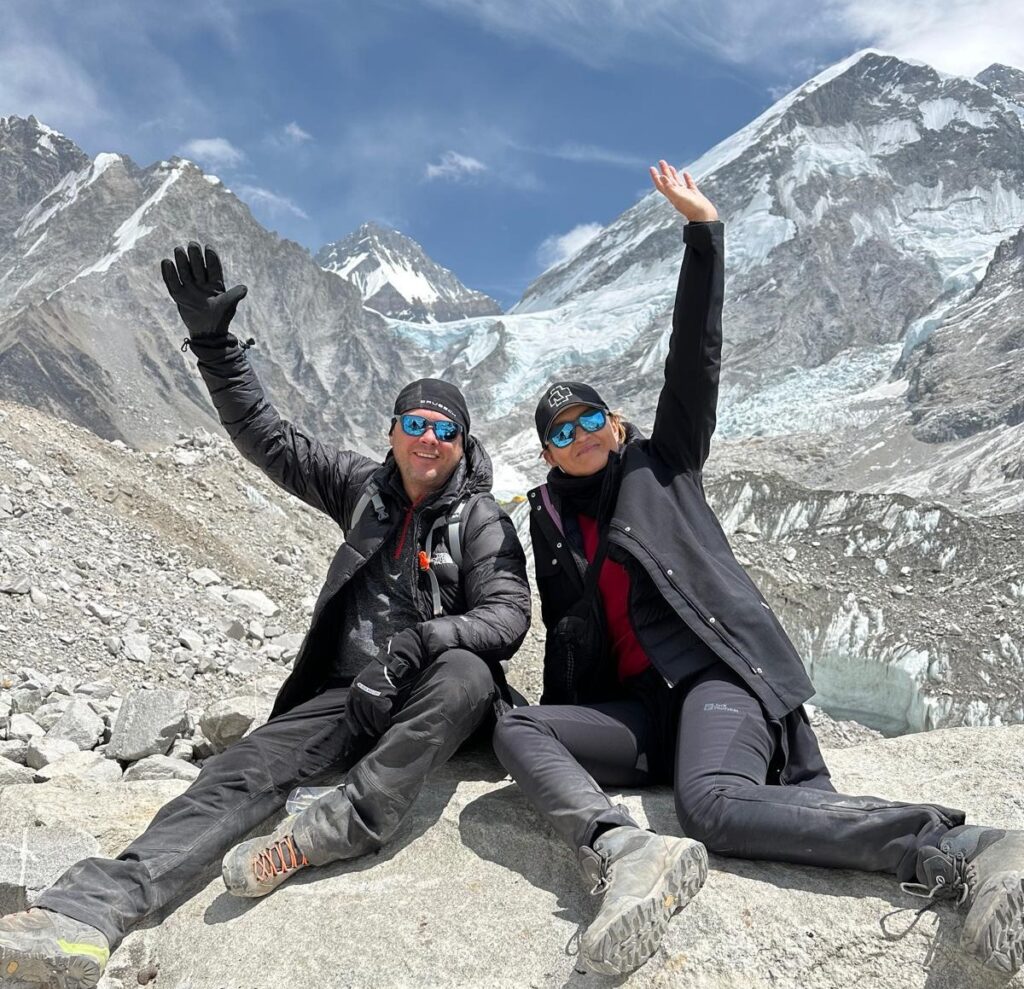The Everest Base Camp Trek (EBC Trek) in Nepal is one of the most iconic adventures in the world. Each year, thousands of trekkers from all over the globe come to walk in the footsteps of legendary mountaineers and experience the raw beauty of the Himalayas.
But one common question always arises: “How hard is the Everest Base Camp Trek, and how can I prepare for it?”
The answer depends on your fitness, preparation, and mindset. Let’s break it down step by step so you know what to expect and how to get ready.
How Hard is the Everest Base Camp Trek?
The EBC Trek is considered moderate to challenging. You don’t need to be a mountaineer, but you do need stamina, patience, and good preparation. Here’s why:
- Distance: Around 130 km round trip, usually completed in 12–14 days.
- Altitude: The trek reaches a maximum height of 5,364m (Everest Base Camp) and 5,545m (Kala Patthar viewpoint).
- Walking hours: Expect 5–7 hours of walking each day, often on steep, rocky, or uneven trails.
- High altitude challenge: The biggest difficulty is not the distance but the thin air at high altitude, which can cause Altitude Mountain Sickness (AMS) if you ascend too quickly.
Good news: With proper pacing, acclimatization, and preparation, even beginners with average fitness can complete the trek.
How to Prepare for the Everest Base Camp Trek
Preparation is the key to making your trek safe and enjoyable. Here are the essentials:
1. Train Your Body
Do regular cardio (running, cycling, swimming, brisk walking).
Add strength training (legs, back, and core muscles).
Practice long hikes with a backpack to get used to carrying weight.
2. Acclimatize Properly
Follow the 12–14 day itinerary with rest days in Namche Bazaar and Dingboche.
Walk slowly, stay hydrated, and avoid rushing.
Know the symptoms of altitude sickness: headache, dizziness, nausea. If they get worse, descend immediately.
3. Pack Smart
- Essentials include:
- Sturdy trekking boots (well broken-in)
- Layered clothing (base layer, warm mid-layer, waterproof outer layer)
- Warm sleeping bag (rated at least -10°C to -15°C)
- Trekking poles (helpful for steep descents)
- First aid kit, sunscreen, sunglasses, and water purification tablets
4. Mental Preparation
The trek is not only physical but also mental. Long days, basic tea house accommodation, and cold weather can be tough. A positive mindset and patience make all the difference.
5. Consider a Guide or Group Trek
For beginners, joining a guided trek is highly recommended. Guides ensure safety, help with acclimatization, and enrich the journey with local knowledge of Sherpa culture and traditions.
Highlights Along the Way
- Namche Bazaar: Sherpa capital with mountain markets and bakeries.
- Tengboche Monastery: Spiritual heart of the Khumbu region.
- Suspension bridges: Iconic crossings over roaring rivers.
- Everest Base Camp & Kala Patthar: Close-up views of Mt. Everest, Lhotse, Nuptse, and Ama Dablam.
- These moments make the challenges worth it.
Is the Everest Base Camp Trek for Beginners?
Yes, with preparation. Many first-time trekkers complete it successfully. If you can walk 5–7 hours a day and prepare your body in advance, you can do it. The key is:
- Train at least 2–3 months before.
- Take it slow and steady.
- Respect the altitude.
The Everest Base Camp Trek is not the easiest trek in the world, but it is definitely one of the most rewarding. It tests your endurance while rewarding you with breathtaking views and unforgettable cultural encounters. With the right preparation, even beginners can make it to Base Camp and experience one of the greatest adventures on Earth.
So, start training, pack wisely, and get ready to step into the heart of the Himalayas.
Everest Base Camp Trek FAQs
1. How difficult is the Everest Base Camp Trek?
The EBC trek isn’t extreme mountaineering, but the long walking days, rocky terrain, and high altitude make it demanding. With proper pacing and training, it’s manageable for most trekkers.
2. Can beginners do the Everest Base Camp Trek?
Many beginners successfully complete the trek. The key is preparing your fitness beforehand, trekking slowly, and taking acclimatization days seriously.
3. How many days does it take to complete the EBC trek?
Most itineraries include 8 trekking days up, 3–4 days down, and 2 acclimatization days, making the full trek around two weeks long.
4. What is the maximum altitude on the trek?
Everest Base Camp itself is at 5,364m, but most trekkers climb Kala Patthar (5,545m) for the best sunrise views of Mount Everest.
5. How should I train for Everest Base Camp Trek?
Build endurance with running or cycling, strengthen legs and core, and practice long hikes carrying 5–10kg to mimic trekking conditions.
6. What should I pack for the trek?
Pack broken-in trekking boots, thermal layers, a down jacket, gloves, hat, a -10°C sleeping bag, first aid kit, and water purification tablets.
7. Is a guide necessary for the trek?
Independent trekking is possible, but guides add safety, navigation, altitude management, and cultural insights—especially useful for first-time trekkers.
8. What is the best time to trek to Everest Base Camp?
These seasons offer stable weather, clear skies, and comfortable temperatures, making them the most popular times for trekking in Nepal.
9. How to avoid altitude sickness during EBC trek?
Follow the golden rule “climb high, sleep low,” drink 3–4 liters daily, and never ignore early symptoms like headache or nausea.
10. Do I need travel insurance for the trek?
A good policy should cover medical emergencies, helicopter evacuation, and trip cancellations, as healthcare facilities are limited in the Himalayas.







